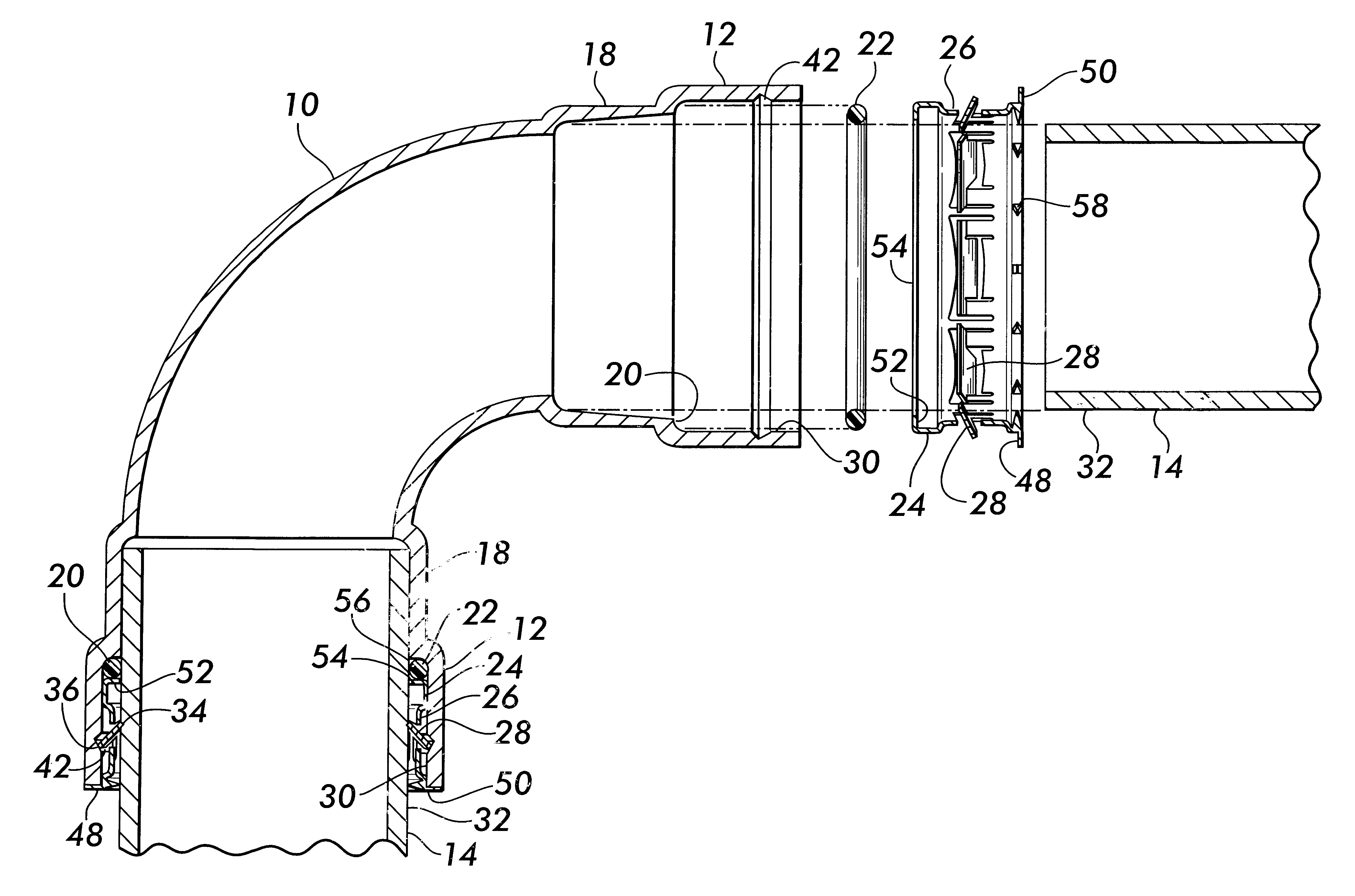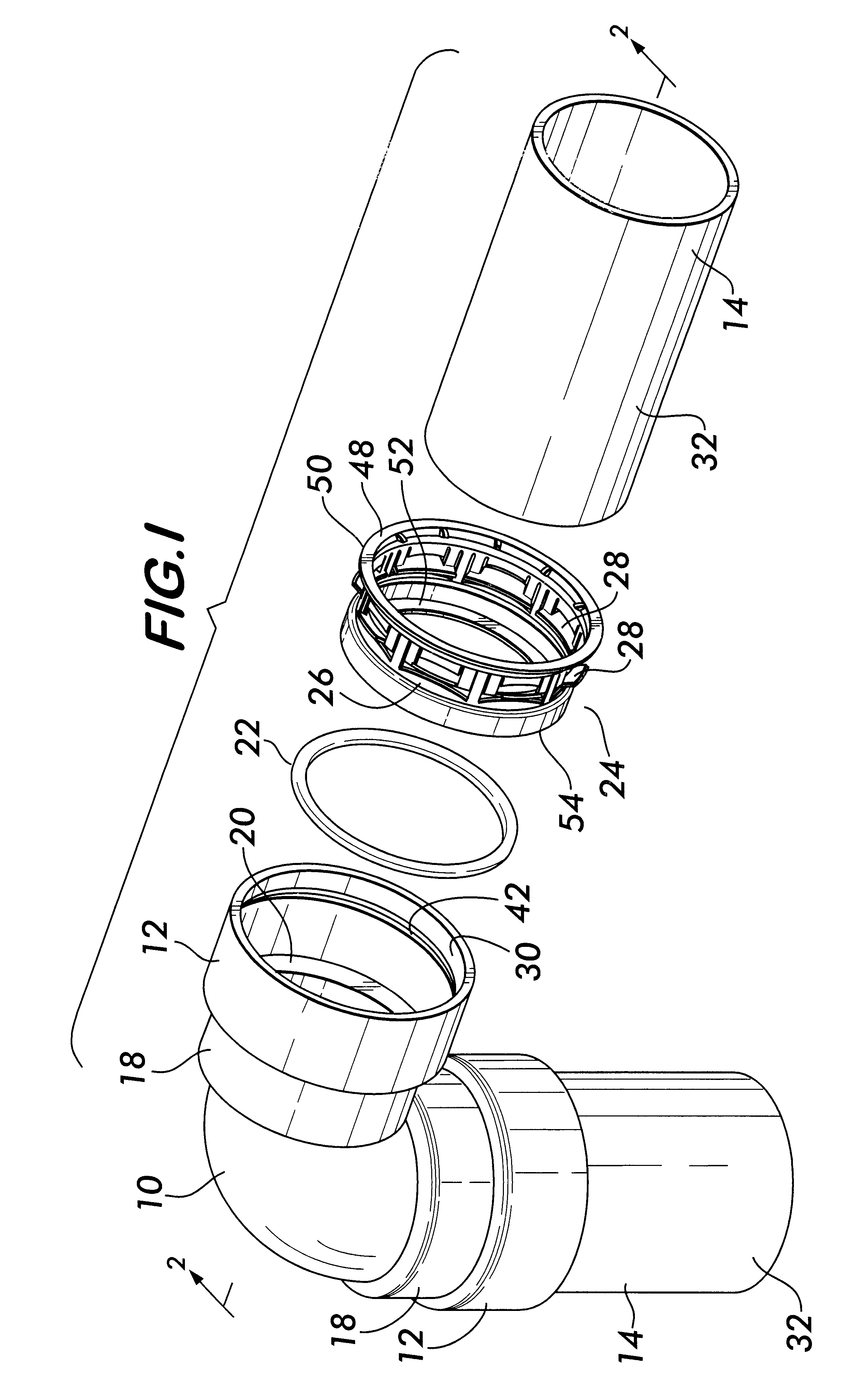Mechanical pipe coupling with toothed retainer
a technology of mechanical pipes and retainers, applied in the field of coupling, can solve the problems of exposing workers, affecting the work efficiency of workers, and disrupting the oxide layer, and achieve the effect of resisting axial rotation of pipes and low energy loss
- Summary
- Abstract
- Description
- Claims
- Application Information
AI Technical Summary
Benefits of technology
Problems solved by technology
Method used
Image
Examples
Embodiment Construction
FIG. 1 shows the preferred embodiment of a coupling 10 according to the invention. The coupling 10 is depicted as a 90.degree. elbow by way of example, but could take any practical form such as a 45.degree. elbow, a tee, a straight coupling, a portion attached to a valve for coupling to a pipe end and the like.
The coupling 10 has a first receptacle 12, preferably cylindrical in shape, for coaxially receiving a pipe end 14. A second receptacle 18 is arranged coaxially and in tandem with first receptacle 12. Second receptacle 18 is preferably tapered, for example, with a linear taper, or a frusto-conical taper, but may also be cylindrical. The taper is preferred to allow second receptacle 18 to receive pipe end 14 in an interference fit thereby providing frictional resistance against axial rotation between said pipe and the coupling 10. Second receptacle 18 is smaller than first receptacle 12 so as to form a shoulder 20 between the first and second receptacles 12 and 18.
Coupling 10 ca...
PUM
 Login to View More
Login to View More Abstract
Description
Claims
Application Information
 Login to View More
Login to View More - R&D
- Intellectual Property
- Life Sciences
- Materials
- Tech Scout
- Unparalleled Data Quality
- Higher Quality Content
- 60% Fewer Hallucinations
Browse by: Latest US Patents, China's latest patents, Technical Efficacy Thesaurus, Application Domain, Technology Topic, Popular Technical Reports.
© 2025 PatSnap. All rights reserved.Legal|Privacy policy|Modern Slavery Act Transparency Statement|Sitemap|About US| Contact US: help@patsnap.com



